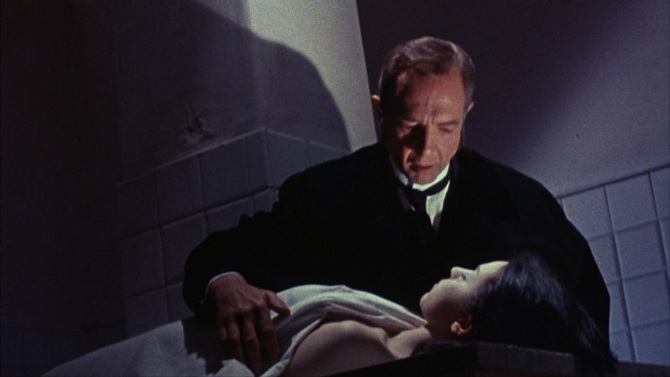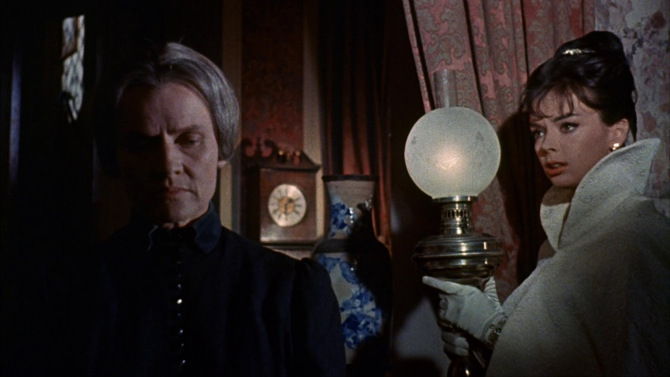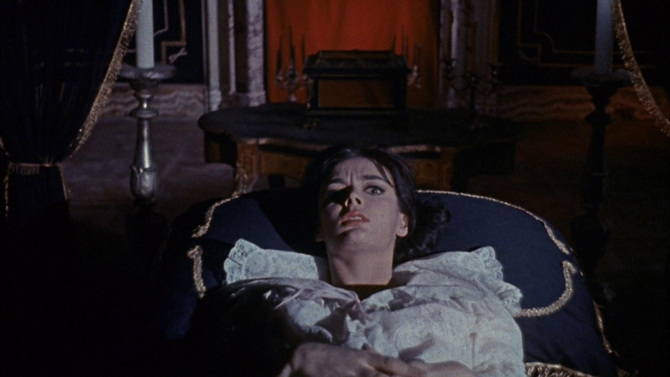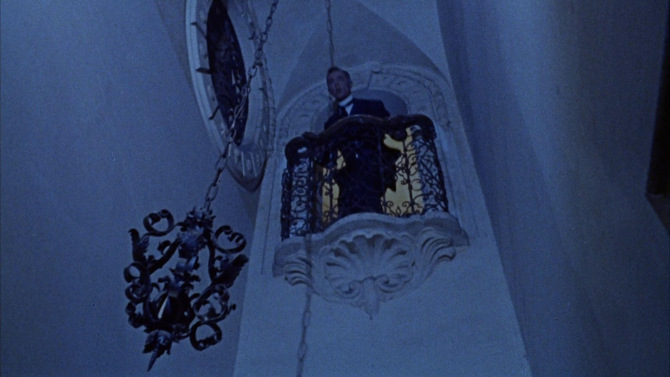Dr. Hichcock: “Here you are, my dear. Drink this – it will make you sleep.”
Using a slight variation on the Master of Suspense’s oh-so-famous name, The Horrible Dr. Hichcock (1962), a horror film out of Italy written and directed by Ernesto Gastaldi, does not hide its love of the great Alfred Hitchcock’s oeuvre.
Set in 1897, the titular Dr. Hichcock is a much lauded surgeon for his early mastery of anesthesia. . . saving lives no one ever thought remotely possible. With a veneer of respectability both in public and at home, his wife, Margaretha (Maria Teresa Vianello), happily entertains the London elite with her elegant piano playing in her extravagant estate home. But it is after hours when his hidden vices are released.
His use of the anesthesia is not solely a medical procedure, for the deviant doctor also uses it on his willing wife in a bizarre form of necrophilia re-enactment. . . which really gets his sexual juices flowing. Yet, in all of his eagerness, he overdoses her, killing his beloved wife. Quitting medicine and fleeing the area after the covered up scandal, it seems like this might be the end of the good doctor’s career and reputation. . . but alas, it is only the beginning.
Finally returning to his homestead some twelve years later with his new and much younger wife, Cynthia (Barbara Steele – Black Sunday) – one of his overwrought patients from whatever backwoods clinic he’d been working at (that seems ethical), her arrival in the dilapidated manor is like something out of Hitchcock’s Oscar Best Picture winning Rebecca (1940).
Met by the now much aged and surly housekeeper Martha (Harriet Medin), her screeching mentally ill sister upstairs, an ominously omnipresent black cat, and a dusty main floor with furniture covered in ghostly white sheets, it is not the warmest of welcomes. Surrounded by the portraits of her new husband’s dead wife, Cynthia is rather abruptly placed in the eerie space of the dead woman’s bedroom – how charming.
With a less than comfortable honeymoon at their crypt-like home, the doctor basically shuns his wife, as his reintegration into the English medical establishment is going less than stellar. . . as if the man has lost his edge since returning. Her only joyous respite comes when her husband’s lively young protégé, Dr. Kurt Russ (Silvano Tranquilli), drops in for a visit.
Lamentably, Hichcock’s kinks soon resurface after spending some refreshing time around a dead woman resting in the chilly morgue. Bringing back his zest for the thin line between life and death, he begins acting strange in front of his wife. She also struggles during his time away at work – believing she has seen an apparition of his long dead Margaretha.
Unsure as to whether this is simply a figment of her imagination or something much more sinister. . . one thing is for sure, it seems like the inhospitable Martha is hiding someone in the secret passages around the house – though the caretaker claims she has sent her mentally ill sister away since their return. Is Cynthia losing it, or might something more foreboding be afoot? Could Dr. Hichcock’s wife still be somewhere in the building? Can Cynthia even compete with an already dead corpse? Perhaps that friendly Dr. Russ should intervene on her behalf?
Utilizing a myriad of horror tropes to concoct an oppressive atmosphere, film maker Gastaldi sets the piece on an old, crumbling dark estate (burial crypt included) reminiscent of so many haunted stories from Edgar Allan Poe on up through the ages, an unwelcoming housekeeper with evil eyes for new residents, a marriage of madness that teases at possible murder (one scene will cause deja vu to the infamous milk scene in Hitchcock’s Suspicion from 1941), the innate fear of death that echoes through the ages from as far back as silent film Vampyr by Carl Theodor Dreyer, so many gothic elements (i.e. isolation, the double, nightmares. . .), a high climb that might just induce Vertigo, and, on the edgier side, the rotting whiff of necrophilia.
Infused with doses of emotional and marital darkness, ample dread, and hypnotic delirium, The Horrible Dr. Hichcock is an impressive gothic horror movie. . . especially when considering it was filmed in an unbelievably short two to three week period (depending on who you listen to). Though a touch messy in its storytelling during the early going, it all comes to a cryptic and cadaverous crescendo. So, don’t sleep on this Italian horror film, it’s horrible Hichcock after all.
This film can be watched in its original Italian with English subtitles, or in dubbed English




